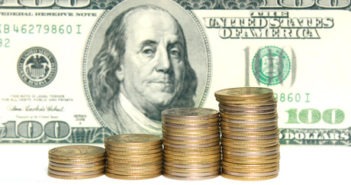- US core inflation is expected to remain unchanged in August.
- Markets are looking beyond the September hike and into the future.
- It could serve as a significant market mover for the US Dollar.
The US publishes the Consumer Price Index report on Thursday, September 13th, at 12:30 GMT. With Trump’s trade tariffs, issues with Emerging Markets, and Brexit, it is easy to brush off the fundamentals of foreign exchange. Markets move on interest rates, especially the American ones. And the Federal Reserve has two mandates: employment and inflation.
The most important figure is Core CPI, the measure that excludes energy and food. The Fed targets the Core PCE, another gauge that uses a slightly different methodology and is published late in the month.,Nevertheless, Core CPI and the Core PCE are highly correlated, and the earlier Core CPI release has a more significant impact.
Expectations and potential reactions
Core CPI hit a cycle high of 2.4% YoY in July, beating expectations. A repeat of the same figure is now forecast. The response will likely be straightforward: a better than expected number would imply inflation is heating up and the Fed will have to react with more rate hikes. Therefore, it will likely result in an instant move higher in the US Dollar.
A slide in core prices implies that inflation has peaked out and the Fed is closer to ending the tightening cycle, making the immediate reaction a downside one.
If Core CPI YoY meets expectations with 2.4%, the reaction will likely be more limited. The response could reflect a surprise in the MoM figure which is projected at 0.2%. If this meets projections as well, the headline CPI YoY is next in line of importance. Here, lower energy prices have pushed expectations down to 2.7% after a result of 2.9% in July.
While the reaction is set to be straightforward for the US Dollar in general, the world’s most popular currency pair, the EUR/USD is not the best candidate to trade the event. The European Central Bank holds its rate decision at around the same time. ECB President Mario Draghi begins talking at 12:30, the time of the publication. His words may have a stronger immediate impact on the EUR/USD than the data.
However, we could see a significant reaction in other pairs such as the USD/JPY, the GBP/USD, especially commodity currencies such as the AUD/USD and the USD/CAD.
Beyond September
The Federal Reserve is going to raise rates in September. If anybody had a doubt, the robust Non-Farm Payrolls report cast that doubt away and also added to the odds of a rate hike in December, the fourth in 2018, in December. The CPI data will help shape the expectations for December.
Moreover, inflation data will also lay the ground for assessing the higher limit of the Fed’s interest rates in the cycle. If inflation reached its limit and is now receding from the peak, the Fed may be closer to its neutral rate. If prices accelerate their gains, the Fed’s ceiling for lending rates may do so as well.
After the September Fed decision, rates will have reached a range of 2-2.25%. Assuming a move in December, the range will reach 2.25-2.50%, which is where core inflation sits at the moment. This could be regarded as a neutral rate where policy is not loose not right. Will the Fed stop there? It is hard to tell as there is quite some time until 2019. Nevertheless, if inflation is stuck, the Fed may follow.
Conclusion
US inflation is a top-tier economic indicator. Any surprise on the Core CPI YoY is set to move the US Dollar in a straightforward manner, but perhaps not against the Euro due to the timing. The numbers are unlikely to impact the Fed in September but will serve as critical input for December and beyond.
More: Trade wars: Only a stock market crash can stop Trump, 3 reasons
Get the 5 most predictable currency pairs
